Join More Than 50,000+ Subscribers and get latest camera news and rumors
NEW CAMERA VIDEOS ON YOUTUBE
|
By admin, on September 21st, 2014
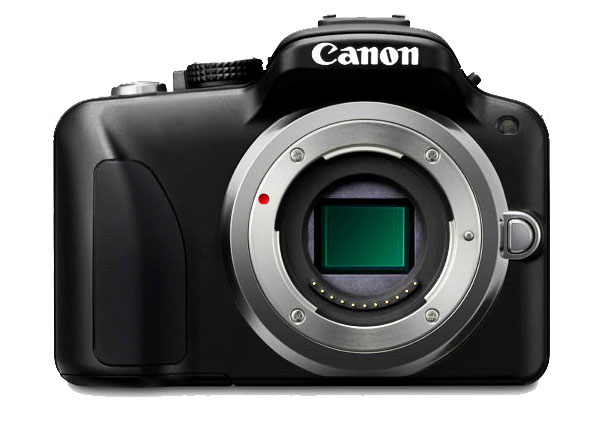 Canon Micro Four Third Creative Image Canon Micro Four Third Creative Image
In an interview Mr Makoto Sakaeta Masaya, (managing director of Canon Image Communication Business Division) said to DC.watch that Canon may announce a new & small system camera based on entirely a new mount (other than EF, EF-S and EF-M mount), so the only mount left in front of Canon is M4/3 mount. The Canon representative also confirmed future commitment to the current EF-M and EOS M lineups
The interview is perfectly translated by user Mistral75 first published on chassimages.com
He says Canon are exploring the possibility of a new mount (distinct from EF, EF-S and EF-M) for a ‘new generation’ camera system with R&D efforts focussing on a new communication interface between the camera body and lens, new optic design and new sensor design, the goal being to downsize the camera system whilst maintaining an image quality comparable to that of the EF system.
He adds that a high image quality will be very difficult to obtain with a smaller sensor since there is a limit on the number of photons that can be captured per unit area.
The optimal sensor size shall take into account the need to downsize the system whilst maintaining a quality comparable to that of EOS 6D and 5D Mark III with EF lenses today. Improvements in the photoelectric conversion efficiency (sensor, optical design, image processing) could lead to smaller sensors in the future. Determine the optimal solution for sensor size will be a major R&D theme for Canon.
He therefore points at the possibility for Canon to use smaller sensors (smaller than APS-C, the interviewer even makes an explicit reference to µ4/3) and never makes any allusion to a new 24×36 mount, either mirrorless or mirrored.

Now a M4/3 system camera from Canon is almost confirmed, but Canon took approx 3 years to announce Sony RX100 M3 competitor Canon G7 X, so we just hope that Canon will bring a M4/3 system camera within 2015-16.
Also take a look at Canon Medium Format Rumors
we will update you as soon as we get any new information STAY WITH ON FACEBOOK | TWITTER | GOOGLE+ to get live news + rumors 24X7+
By admin, on May 11th, 2014
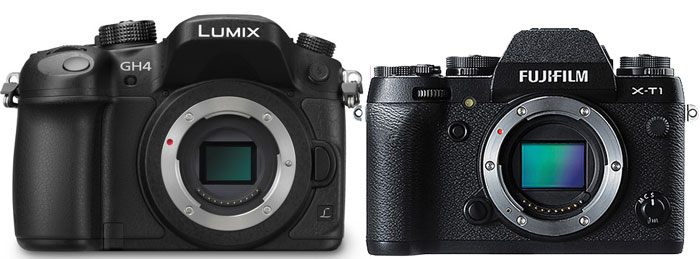 Real size comparison – Fuji have smaller body and big sensor Real size comparison – Fuji have smaller body and big sensor
Panasonic GH4 vs Fuji X-T1, the X-T1 is flagship camera from fuji and Panasonic GH4 is a flagship camera from Panasonic, before we start the comparison I must say that Panasonic GH4 have better video capturing mode and resolution compared to X-T1.. but Fuji have very strong core specification for still shooters.. take a look below for more details
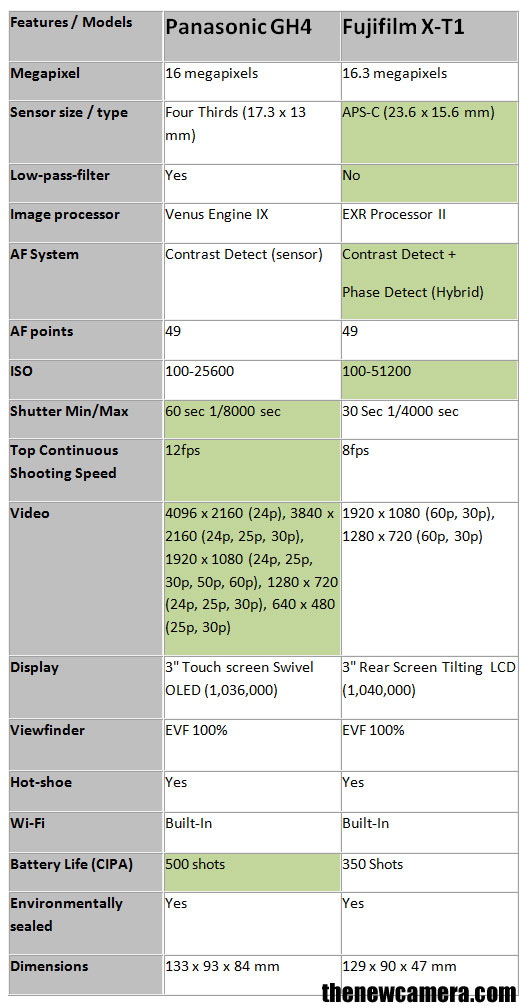
Sensor:
Fuji have bigger sensor, the APS-C sensor have more surface area to collect light compared M4/3 format based sensor, hence Fuji will give better image quality and more dynamic range due to bigger sensor size.
No Low-pass filter – Fuji features 16.3MP APS-C X-Trans CMOS II Sensor, the X trans sensor doesn’t need a external low-pass filter hence it will produce sharper still images compared to Panasonic GH4 at 100%.
PDAF architecture – The Fuji X-T1 system have built-in phase AF points inside the sensor, due to PDAF technology the camera have HYBRID AF system inside, the Panasonic GH4 is limited to contrast based AF system.
ISO Range: Fujifilm X-T1 ISO range starts from 100 to 51200, the GH4 ISO range is limited to 25600 only.
From the above we conclude that Fuji X-T1 will produce better Image Quality and also have advance AF system than Panasonic GH4.
Video:
Professional 4K Video Recording in GH4 – The Panasonic GH4 records 4K video, 16:9 UHD 4K 3840×2160 video at 23.98p, 24p or 29.97p, and 17:9 DCI (Digital Cinema Initiatives) 4K 4096×2160 videos at 24p. with MOV, MP4, MPEG-4 AVCHD recording formats.
Fujifilm X-T1 is limited to Full HD Video recording with 60fps frame rate, recording format H.264, MOV.
Others
Shutter: Panasonic GH 4 have fast continuous shooting speed and shutter range.
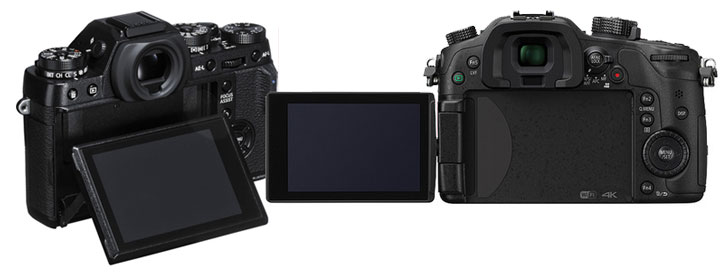
Display: I like the display unit of Panasonic GH4 camera, the GH4 moves in multiple direction on the other hand X-T1 display unit have limited flexibility.
Both camera built with Magnesium Alloy metal, you get a Weather Sealed Body to shoot in all conditions.
Both camera have built-in wireless connectivity
Verdict: Fujifilm X-T1 have better Sensor and AF system, but Panasonic GH4 have 4K video recording option, for still shooters we highly recommend you to buy FujiX-T1 on the other hand Panasonic GH4 is recommended for Videographers.
Buy Panasonic GH4 at Amazon| from B&H
By admin, on March 5th, 2014
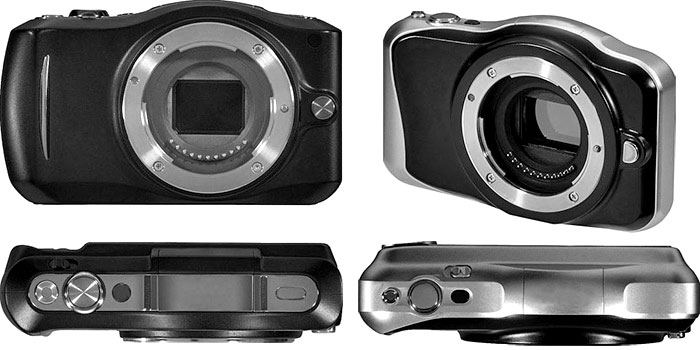
According to latest rumors Panasonic may announce its GF7 (name still not confirmed yet), GF6 successor coming on late spring / April-May 2014, the camera will have new ultra-compact design as shown above, no details about the specification available yet.
Stay with at Facebook for more news and Panasonic Rumors
src – 4/3R.com
By admin, on February 7th, 2014
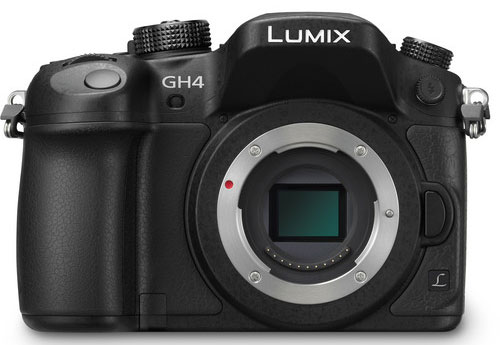
Panasonic finally announced the GH4 camera, the camera features 4K recording optipon and features nelwy developed 16 Meghpixel 4/3 Format Sensor and Venus Engine IX processor, the new processor is capable of processing 4K videos.
The GH4 also uses newly developed AF system called ‘Depth from Defocus’, the AF speed is reduced to 0.07 sec only, on the rear side we have 3″ 1.04M dot fully articulating OLED display and 2 million dots EVF.
Pre-order Panasonic GH4 from Amazon
Pre-order Panasonic GH4 from B&H
By admin, on February 2nd, 2014
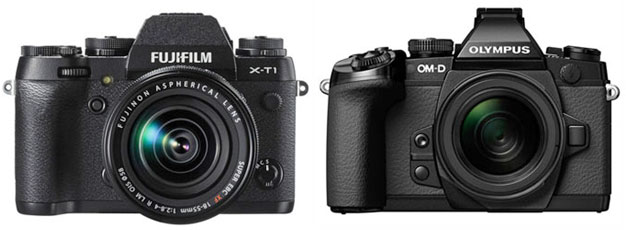
The Fujifilm X-T1 is latest camera from fuji X-series mirrorless system and on the other hand the OMD E-M1 is flagship camera of digital OMD series, the basic and most common difference between these two camera is the size of the sensor, the Fujifilm X-T1 features a large APS-C size sensor and Olympus E-M1 have M4/3 Size sensor.
For more detailed specification take a look at the detailed specification comparison review below…
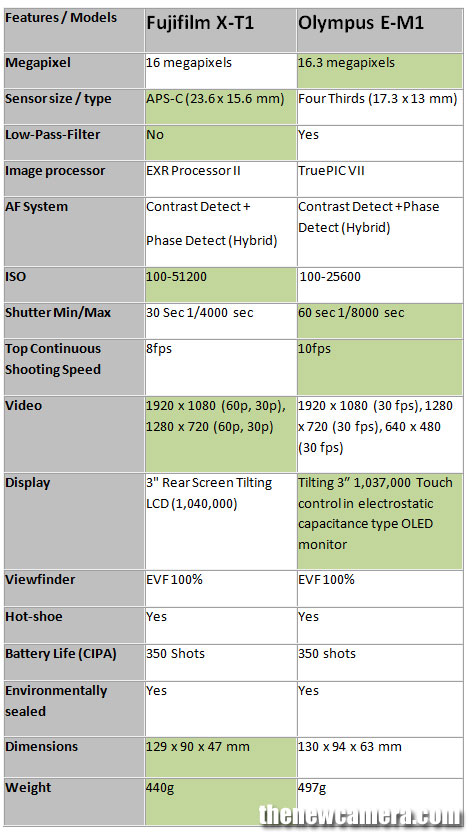
Sensor: Fujifilm X-T1 features a 16 megapixel X-Trans CMOS sensor, the X-Trans bespoke pixel array, the sensor is designed with a randomized pixel pattern that completely eliminate the need of an optical low-pass filter without moiré and aliasing problems.
Olumpus E-M1 Comes with a Four Third format sensor, the sensor is smaller and will not perform as X-T1 camera in-terms of noise and dynamic range.
ISO Range of X-T1 is one stop more than Olympus E-M1, so you will sure get less noise in X-T1 images.
AF system: Both autofocus system that employs both contrast- and phase-detection methods / Both sensor have built in phase AF points so you get fast Auto Focus speed during still and video shoot.
Shutter: The Olympus E-M1 have upper hand here since you get better shutter range and fast top continuous shooting speed compared to fujifilm X-T1.
Image Stabilization: The Olympus E-M1 have built in Image stabilization, it compensates for camera movements up to five shutter speed steps. The five axis work in vertical angle rotation, horizontal angle rotation, horizontal shift, vertical shift, and rolling camera shake movements.
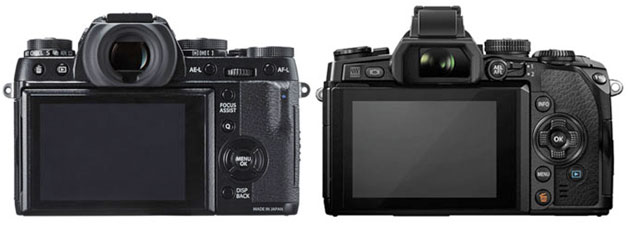
Display:: The X-T1 features 3.0″ 1,040k-Dot Tilting LCD Monitor and on the other hand Olympus E-M1 3.0″ 1,037k-Dot Tilting LCD Touchscreen, so Olympus wins here.
Both camera features rugged body and built-in WiFi Connectivity.
Verdict: The Fujifilm X-T1 will give you bigger sensor, more ISO range, no optical low pass filter for super sharp images and better video mode, on the other hand the E-M1 will give you bit fast shutter speed and built-in 5 axis image stabilization.
We recommend you to buy Fujifilm X-T1.
Buy Fujifilm X-T1 from Amazon || B&H
Buy Olympus E-M1 from Amazon || B&H
By admin, on January 29th, 2014
With the announcement of E-M10 camera Olympus also announced three new lenses the
- Olympus m.Zuiko Digital 25mm F1.8
- Olympus m.Zuiko Digital 14-42mm F3.5-5.6 EZ
- Olympus 9mm F8 Fish-Eye Body Cap Lens
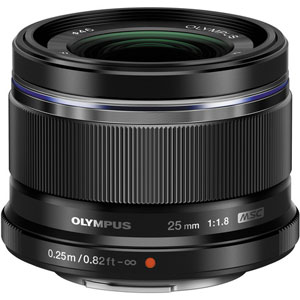
The m.Zuiko Digital 25mm F1.8 is newest addition to prime lenses series and comes with Movie & Stills Compatible AF System, the cost is also bit affordable ($399 at B&H) ,
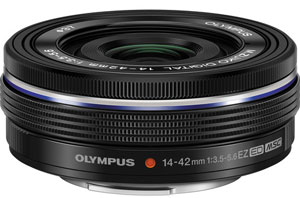
the other one is Olympus M.Zuiko Digital ED 14-42mm f/3.5-5.6 EZ Lens , it features a very ultra compact design, made with three aspherical elements, extra-low dispersion element and super high refractive index element – all these elements help it to make a perfect retractable zoom lens for E-M10 camera – Price $349 available at B&H store.
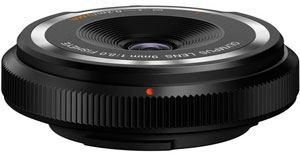
The last one is a lens cap with a 9mm lens, the 9mm lens features constant F8 aperture and composed of Two Aspherical Elements to deliver usable results – Price $99 available at B&H
By admin, on January 29th, 2014
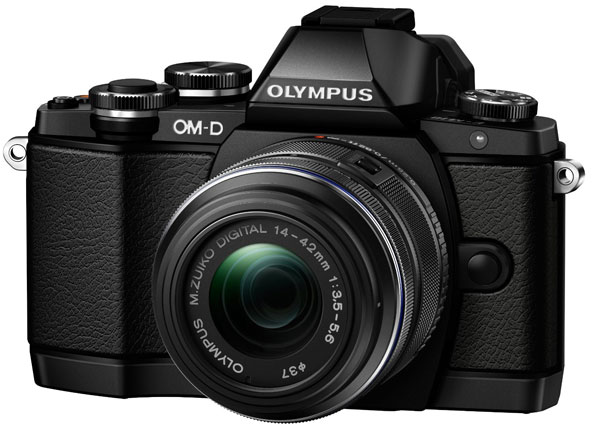
The long rumored Olympus E-M10 announced today, the camera features ultra compact body as stylus 1 compact camera and equipped with 16.1MP Live MOS Sensor with In-Body 3-Axis Image Stabilization that compensates for vertical and horizontal shifts (yaw and pitch) as well as camera shake along the optical axis (roll)., E-M10 speed performance is enhanced by use TruePic VII Image Processor and also captures Full HD 1080p Video Recording at 30 fps.
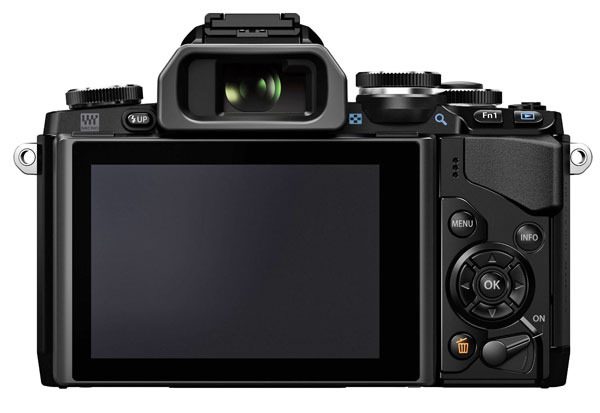
On the rear side we have bright 1,440k-dot electronic viewfinder with an automatic eye-detect function, 0.007 sec. display lag time, and 1.15x magnification and we also have a a large 3.0″ 1,037k-dot tilting touchscreen LCD monitor, you can move it tilt 80° upward and 50° downward, useful while composing without moving our body while composing our shot.
Other features include WiFi connectivity, the E-M10 also comes with a high quality collapsible 14-42mm F3.5-5.6 II R lens.
Olympus E-M10 Price
Olympus E-M10 cost you $699 body-only – Amazon | B&H
Olympus E-M10 with collapsible 14-42mm F3.5-5.6 II R lens cost you $799 – Amazon | B&H
Press Release:
OLYMPUS EXPANDS OM-D® CAMERA LINE-UP WITH NEW, EXTREMELY COMPACT E-M10 — THE OM-D FOR ALL
The Image Quality and Power of the E-M1 and E-M5 are now Packed into a More Affordable OM-D Body; Two New Lenses Broaden Olympus’s Micro Four Thirds® System
CENTER VALLEY, Pa., January 29, 2014 — Olympus adds to its award-winning OM-D family with the new E-M10, an interchangeable lens camera that combines the outstanding image quality, speed and power of the flagship Olympus® OM-D E-M1 and the Olympus OM-D E-M5 into an extremely compact and stylish all-metal body. Featuring the new TruePic VII image processor, the same found in the OM-D E-M1, 16 megapixel Live MOS sensor, Wi-Fi® technology, a large, high-speed electronic viewfinder, 3-axis image stabilization, ultrafast autofocus and a built-in flash, it’s the OM-D for photographers looking for an affordable, yet powerful, system camera they can use every day. The new, super-slim M.ZUIKO® DIGITAL 14-42mm f 3.5-5.6 EZ pancake zoom lens and the super-bright M.ZUIKO DIGITAL 25mm f1.8 expands Olympus Micro Four Thirds line-up to 15 lenses.
Best-In-Class Image Quality
The Olympus OM-D E-M10’s 16-megapixel Live MOS sensor, combined with the TruePic VII image processor and M.ZUIKO lenses, delivers beautiful image quality with high resolution, superior color reproduction and high sensitivity that exceeds other cameras in its class. A maximum sensitivity of ISO 25600 is perfect for shooting dark scenes and indoor shooting locations, and ISO LOW mode (100 equivalent) expands the low-sensitivity end. The sensor’s rich dynamic range makes smooth gradations possible and beautifully depicts high-contrast highlights and shadows. Fine Detail Processing II technology configures the appropriate sharpness processing for each individual lens resulting in natural, high-quality resolution.
The Olympus OM-D E-M10’s in-body 3-axis image stabilization system is derived from the world’s first 5-axis system in the E-M5 and E-M1. The 3-axis version effectively counteracts yaw, roll and pitch with both still shots and HD movies, regardless of the lens attached to the camera yielding great results even in poor lighting conditions or when using an exposure time of 1/15 second or less.
Speed
The on-board FAST AF is Olympus’ fastest-ever AF system and uses 81 target areas that cover the whole image. Small AF Target and Super Spot AF modes make it possible to zoom in and focus accurately on minute sections of the frame. The E-M10 is also capable of capturing high-speed action with 8fps sequential shooting, the fast processor supports continuous capture of up to 20 RAW frames or an unlimited number of JPEG frames*, and the Continuous Auto Focus with Tracking mode accurately tracks and captures moving subject as fast as 3.5 fps.
Beautiful OM-D Design
The ultra-slim, compact and lightweight Olympus OM-D E-M10 body is built with precision-machined metal parts and a premium feel that inspires the user. Two easy-to-reach metal dials give excellent operability and improved control, and the grip is designed to rest comfortably in the user’s hand. Despite its size, the E-M10 is the first OM-D with a built-in flash that is optimized for 1/250 second synchronization, a benefit for daytime flash photography.
* With TOSHIBA® SDHC UHS-I R95/W90 EXCERIA
High-Speed Creative EVF
The large, 1,440,000-dot electronic high resolution viewfinder (EVF) located on the optical axis of the E-M10 features a 120-fps refresh rate, a 100 percent field of view and maximum 1.15x magnification to help accurately frame shots. An eye sensor seamlessly switches the display between the tilting, 3.0-inch touch-screen monitor and the electronic viewfinder. Camera setting information, such as shutter speed, is displayed at the bottom of the viewfinder and photographers can take full advantage of the EVF’s ability to display the effects of various exposure adjustments, Art Filter effects and Creative Controls like Color Creator, Image Aspect control, Highlight/Shadow control, Live Histogram, Display of five different grid patterns and even a Level Gauge — all without having to remove your eye from the viewfinder.
In-Camera Creativity
New features, including Live Composite Mode and Photo & Movie Capture, expand the user’s creative potential. Live Composite Mode is a tool that offers previews of long exposures in the EVF, a perfect tool for anyone looking to easily capture light trails when shooting a star-filled sky. Photo & Movie Capture lets users shoot high-quality still images without interrupting the video recording. 12 Art Filters, three HDR capture modes and Photo Story support your photographic imagination.
Built-In Wi-Fi
The Olympus OM-D E-M10 includes built-in Wi-Fi, and the setup is simple. By quickly scanning the QR code displayed on the camera’s LCD with a smart device, it syncs with the Wi-Fi network created by the camera. The free Olympus Image Share smartphone app synchronizes a user’s smartphone and E-M10 so the camera’s Live View is effectively displayed on the phone. In this way, the camera can be controlled by touching the smartphone display as if it were the camera itself, and users can send selected images directly to websites and social media.
Two New Micro Four Thirds Lenses
Olympus has also introduced two new Micro Four Thirds lenses to its line-up. The super-slim M.ZUIKO DIGITAL 14-42mm* f3.5-5.6 EZ pancake zoom lens measures just .9 inches thick, making it the world’s slimmest standard zoom lens.** It has a smooth electric zoom that is suitable for shooting movies, and can also be zoomed in and out remotely using compatible smartphones through the updated Olympus Image Share app. The super-bright, lightweight, high-performance M.ZUIKO DIGITAL 25mm* f1.8 lens has a fixed focal length and is ideal for capturing portraits or close-ups from as little as 9.8 inches away. Both new lenses are sold separately.
New Micro Four Thirds Accessories
A host of new Micro Four Thirds accessories join the Olympus Micro Four Thirds line-up, including the fixed-aperture F8.0 Fish Eye Body Cap lens with a focal length of 9mm (35mm equivalent: 18mm). It’s an ultra-slim accessory for creative wide-angle shooting through its 5-element, 4-group lens construction. The multi-use lens barrier MF lever switches from pan focus shooting to close up 8-inch shooting with a single press of the lever. The ECG-1 matching ergonomic grip is a removable grip exclusively for use with the E-M10. Designed for absolute comfort, the grip is the perfect thickness for resting the ring finger and pinky when holding the camera. A single press of the lever on the bottom of the grip easily removes it, making replacing batteries and memory cards seamless. The MCON-PO2 macro converter is compatible with six Olympus Micro Four Thirds lenses and adapts them for close-up shooting. Finally, the Automatic Opening Lens Cap LC-37C is available exclusively for use with the new M.ZUIKO DIGITAL ED 14-42mm F3.5-5.6 EZ. When the camera is turned off, this accessory protects the lens from dust and scratches, and when the camera is powered on the lens cap instantly opens for snapshots and quick shooting.
*35mm Equivalent
**As of January 29, 2014. Shortest distance between the mount and the front end of the lens, when retracted.
U.S. Pricing and Availability
The Olympus OM-D E-M10 will be available in March 2014 in the following configurations.
Estimated Street Price:
$699.99 Body only, available in Black and Silver
$799.99 Body in Black or Silver with M.ZUIKO DIGITAL 14-42 mm f3.5-5.6 II R lens
Accessory Pricing (U.S.)
$399.99 M.ZUIKO DIGITAL 25mm f1.8 lens
$349.99 M.ZUIKO DIGITAL ED 14-42mm f3.5-5.6 EZ lens
$59.99 ECG-1 camera grip for E-M10
$69.99 MCON-P02 Macro Converter
$99.99 9mm f8.0 Fish Eye Body Cap Lens
|
KEEP THIS BLOG ALIVE - Support New Camera Buy Canon Lenses, Buy Music CD or Digital Camera at amazon it helps this site, and you do not pay anything extra, it is just a way to help support this site.

|
 Canon Micro Four Third Creative Image
Canon Micro Four Third Creative Image

 Real size comparison – Fuji have smaller body and big sensor
Real size comparison – Fuji have smaller body and big sensor















